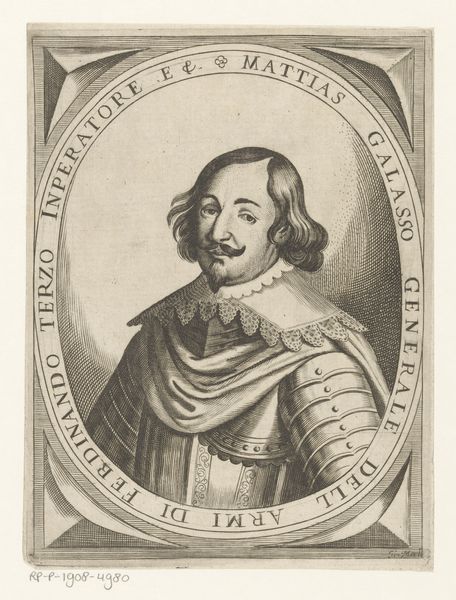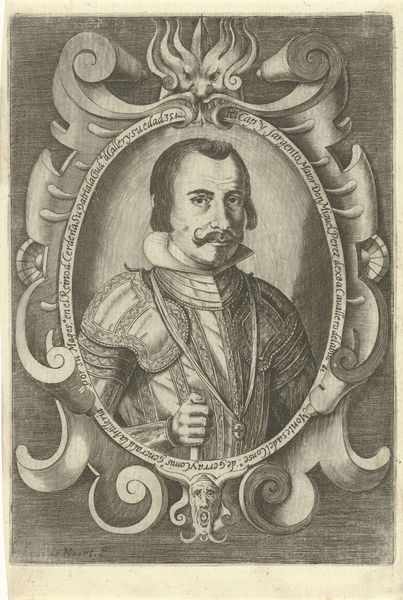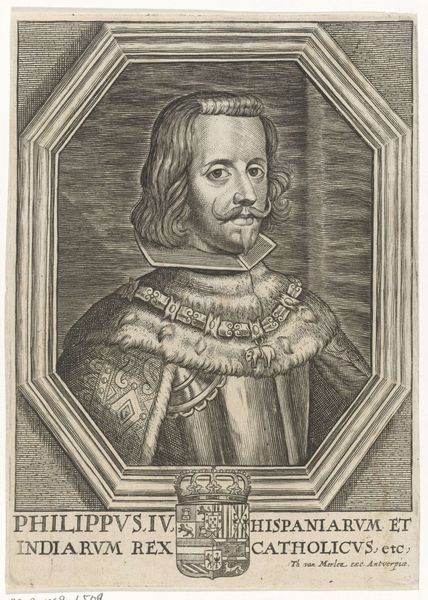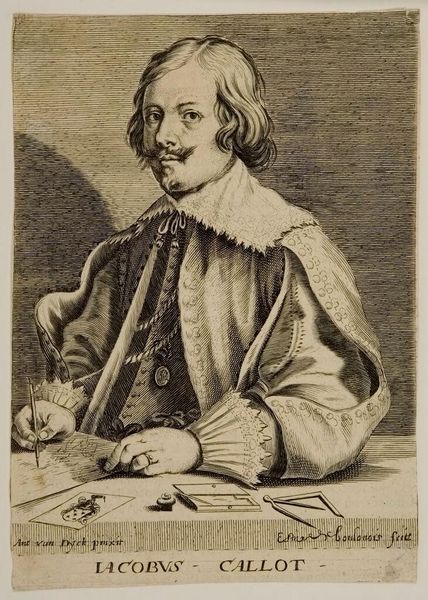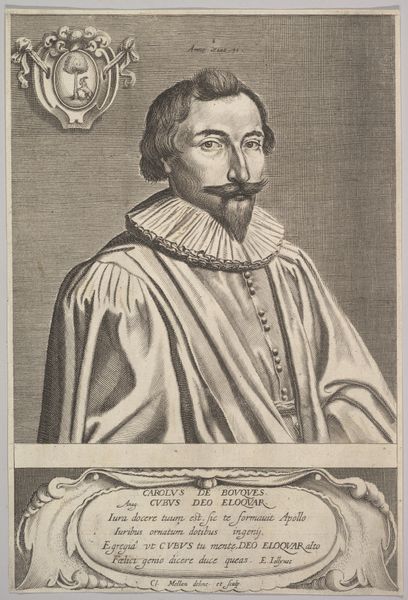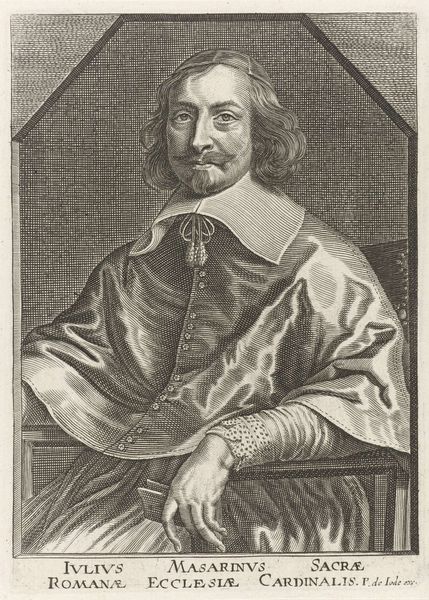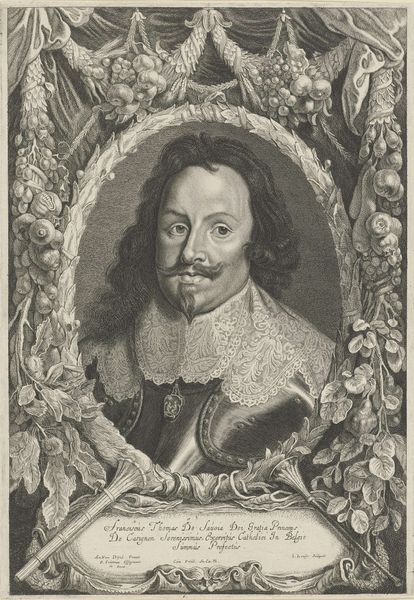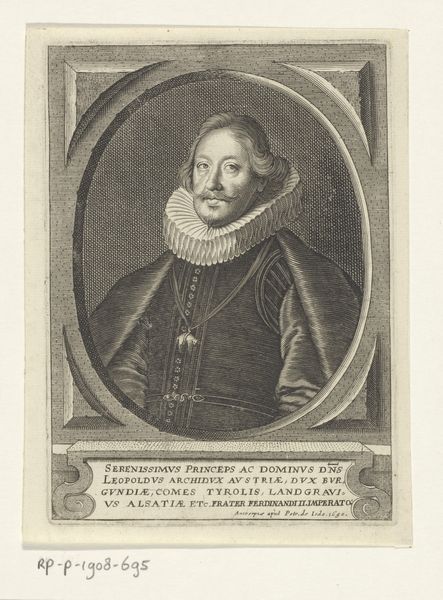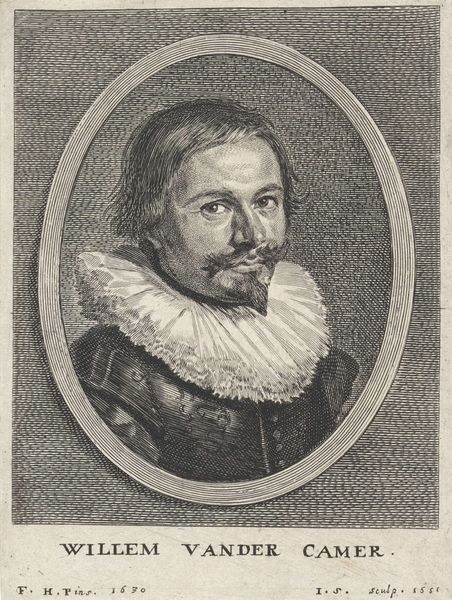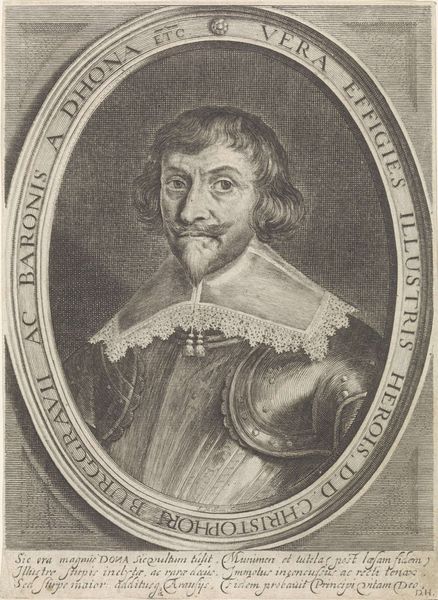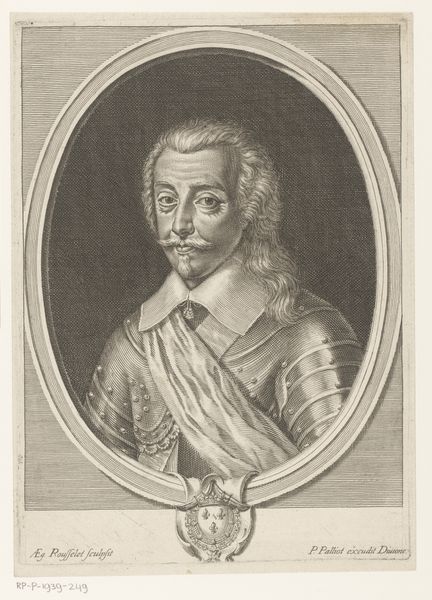
photography, engraving
#
portrait
#
baroque
#
dutch-golden-age
#
charcoal drawing
#
photography
#
portrait drawing
#
engraving
Copyright: Public domain
Editor: Here we have a portrait engraving of François Gysels, made by David Bailly. It's so detailed and ornate. He looks important. What can you tell me about this piece? Curator: This portrait encapsulates a crucial shift in artistic representation. Gysels' confident gaze speaks volumes, but it’s also essential to consider *who* was deemed worthy of such commemoration during this period. How might gender, class, or even guild membership play into this depiction? Editor: That’s interesting. I hadn't considered how unusual or common it would be to see someone in a portrait back then. Is it about power dynamics, like who has the power to be remembered? Curator: Exactly! The elaborate clothing, the artist's tools in the foreground - these aren’t accidental details. They construct a narrative of status, skill, and perhaps even the rising influence of artists within society. How might we read this portrait alongside other representations of artists during this era, especially considering issues of patronage and artistic agency? Editor: So it's not just a picture of a man; it’s about the social and economic context of artmaking at that time. Curator: Precisely! And the visual language they were using to communicate. Consider also the racial dynamics; who *isn't* in these portraits, and what does that silence reveal? It’s important to question those absences, right? Editor: I will. Thank you! I never thought a portrait could be so…political. Curator: Art always reflects and shapes our understanding of the world. I will look at art, even portraits, through a different lens from now on.
Comments
No comments
Be the first to comment and join the conversation on the ultimate creative platform.
